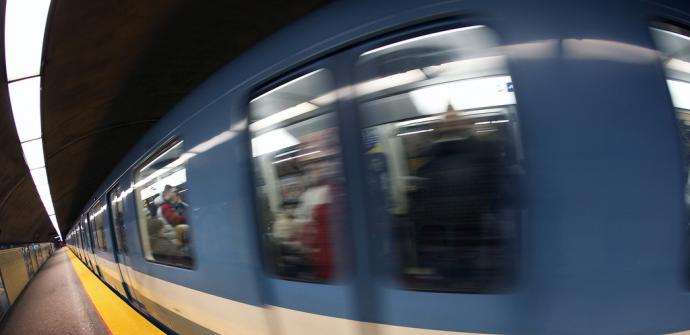During a technical briefing, Carl Desrosiers, CEO, and Dominique Lemay, executive director, metro services, provided an update on the recent metro service disruptions. They also presented the company’s action plan to increase the reliability of certain equipment and improve customer information.
Montréal, May 30, 2013 – During a technical briefing, Carl Desrosiers, CEO, and Dominique Lemay, executive director, metro services, provided an update on the recent metro service disruptions. They also presented the company’s action plan to increase the reliability of certain equipment and improve customer information.
Mr. Desrosiers began by noting that the six service disruptions in the past week (May 21 to 28) were completely unrelated. “Although they represent only 1% of the total operating hours, we nevertheless realize that this series of disruptions during peak periods had an impact on our clientele,” he explained. “Despite these events, we are not seeing a general downward trend in the metro’s reliability. In fact, the reality is that we are facing certain technological challenges, such as boosting stability and making the computer systems more robust as well as improving customer information during failures, challenges for which we are already implementing solutions.”
Computer systems
Among the solutions identified are a series of measures taken to correct the problems experienced during the various failures affecting the four metro lines:
-
A router card in the remote-transmission network that failed on June 20, 2012, was replaced the next day
-
A data solution was applied on March 17, 2013, to the server that caused the November and December 2012 failures
-
A software update was installed on April 7, 2013, on the servers that experienced problems in July 2012 and March and April 2013
-
An update is currently being tested to correct the software malfunction of a remote-transmission network router that occurred on May 21, 2013
In addition, the STM has engaged the services of an international expert to guide the company’s choice of actions in a plan to consolidate its centralized control and thereby reduce the number, duration, and scale of metro computer system failures. Note that the STM’s centralized control encompasses approximately 15,000 components and manages more than 100 servers, over 2,000 surveillance cameras, around 100 computers, more than 40 software programs and applications, some 13 million data inputs, several million lines of programming code, 800 automated systems and 105,000 control signals.
Customer information
The STM’s customer information procedures have also been revised to improve communication during service disruptions. Effective June 3, the information will be automated and originate directly from the metro control centre to increase efficiency. Additionally, the cause and duration will be available via Twitter, the STM website and mobile applications, email alerts, text messages, and the STM-INFO telephone line, as well as the metro stations’ PA system and displays.
As well, a Twitter feed will be created for each metro line (@stm_Verte, @stm_Orange, @stm_Jaune, @stm_Bleue) to enable passengers to follow the line(s) they use. Additional info will be provided on Twitter from 6:00 a.m. to 8:00 p.m. daily during metro service disruptions lasting longer than ten minutes.
Finally, to minimize the number of service disruptions caused by human factors, which represent more than half of all disruptions, a series of measures have been taken over the years and will continue in the future. These measures include deployment of customer support teams in some 20 stations during peak periods (morning and afternoon), conducting customer awareness campaigns on various safety issues (items fallen on the tracks, emergency brakes, doors held open, etc.), implementation of a door-closing signal on the blue and orange lines, installation of boxes to decrease unwarranted use of the emergency brakes, and installation of yellow textured edge tiles on the platforms.
Statistics
In 2012, there were 1,029 service disruptions in the Montréal metro system lasting five minutes or longer. Of those, 510 were related to wrongdoing and illness, 221 to the rolling stock, 75 to the fixed systems and equipment, and 223 to other factors (e.g. power fluctuations, dynamiting). As a result, there were 13.2 service disruptions per million kilometres travelled. This figure has improved in 2013, decreasing to 12.5. According to Imperial College London, the global average is about 24.7 service disruptions per million kilometres travelled, or 1,928 disruptions per year for a metro travelling the same distance as Montréal’s.
Finally, note that the STM provided 412.6 million trips in 2012—an increase of 1.9% over 2011. This represents 1.3 million trips per average week day, of which 40% were via metro, 31% via bus, and 29% via both transportation methods. The metro system thus provided 895,000 trips per average week day. Metro cars travelled a record 78.2 million kilometres in 2012 with a reliability rate of 97.6%.
